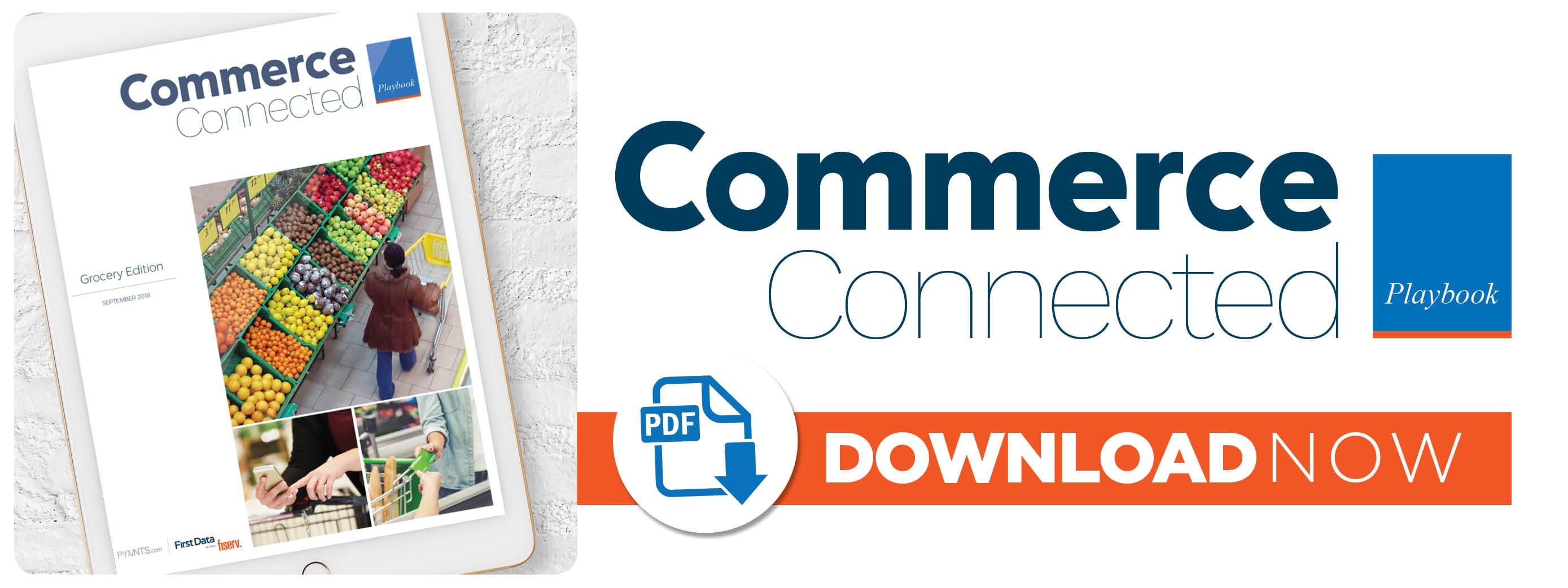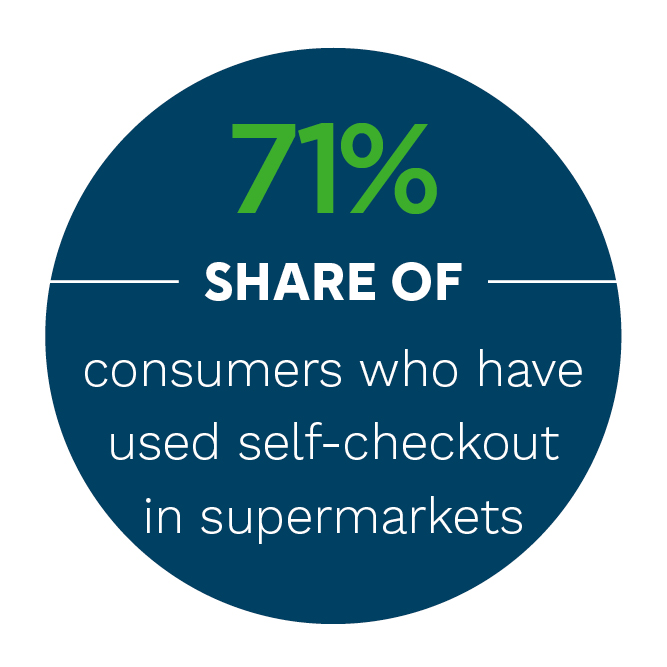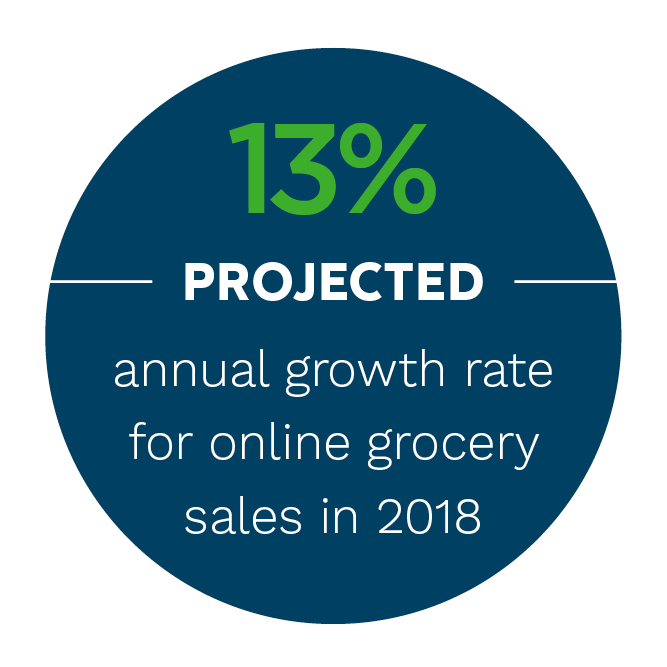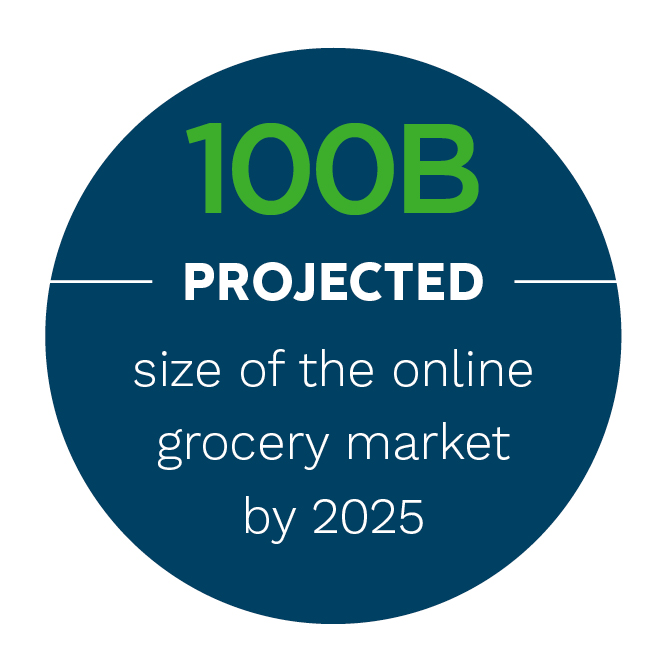NEW REPORT: The Cutthroat, Consumer-Centric Grocery Price Wars

 Americans spent some $682 billion on groceries in 2017 alone. The bulk of that spending took place at brick-and-mortar grocery stores and supermarkets, but all of that is changing as consumers turn to digital channels.
Americans spent some $682 billion on groceries in 2017 alone. The bulk of that spending took place at brick-and-mortar grocery stores and supermarkets, but all of that is changing as consumers turn to digital channels.
While many still head to brick-and-mortar stores, shoppers are increasingly taking to digital channels, ordering groceries online instead of roaming through the aisles — having their produce, meat and grains delivered to their home or picking them up from stores via curbside delivery services. In fact, online grocery sales are projected to have a 13 percent annual growth rate in 2018, with online grocery sales projected to reach $100 billion by 2025. In-store shoppers are also embracing mobile and connected offerings, such as payment methods, loyalty and rewards programs or other services.
 The pressure is on grocers and supermarket operators to deliver on consumers’ demand for choice, savings and convenience. This demand can be particularly tough on smaller chains, competing for business against the “everyday low prices” of Walmart, price matching by Target and margin squeezing by Amazon and Whole Foods Market.
The pressure is on grocers and supermarket operators to deliver on consumers’ demand for choice, savings and convenience. This demand can be particularly tough on smaller chains, competing for business against the “everyday low prices” of Walmart, price matching by Target and margin squeezing by Amazon and Whole Foods Market.
Over the past four years, nearly 20 major U.S. grocers have yielded to the pressure and declared bankruptcy, and more could fade into obscurity over the next few years if they do not make operational changes. Many continue to struggle with differentiation as well as a lag in digital enablement, and are still figuring out how to integrate innovative loyalty, online capabilities and delivery programs.
So, how can grocers keep pace with quickly shifting consumer trends and find success in this rapidly changing space? That is the question addressed in the latest edition of the Commerce Connected Playbook, designed to give readers an overview of the latest developments, data and trends from around the online and connected grocery space.
As can be seen on the pages of the latest Playbook, grocers are heeding consumers’ call for convenience via connected offerings and rolling out new services designed to meet their expectations. Some, like Walmart and Kroger, are investing in new delivery services.
 Walmart is partnering with startup Deliv, as well as smart locks and smart home accessories provider August Home, to test an online direct-to-fridge grocery delivery concept, while Kroger has its own plans for new delivery offerings centered around removing drivers from the equation. The company recently announced a partnership with tech provider Nuro to test an on-road, fully autonomous delivery service.
Walmart is partnering with startup Deliv, as well as smart locks and smart home accessories provider August Home, to test an online direct-to-fridge grocery delivery concept, while Kroger has its own plans for new delivery offerings centered around removing drivers from the equation. The company recently announced a partnership with tech provider Nuro to test an on-road, fully autonomous delivery service.
Others are hoping that curbside pickup services will resonate with customers. Target, for one, is expanding its Drive Up curbside pickup service to 200 additional Midwestern locations, a move that gives the region’s shoppers better access to eCommerce grocery sales.
Amazon, meanwhile, is bringing some of its eCommerce-based services to brick-and-mortar stores. The company recently announced it would apply Prime benefits to in-store purchases, allowing the 60 percent of Whole Foods shoppers who are also Prime members to receive 10 percent off sale items, as well as other perks and discounts offered through Amazon’s mobile app.
However, grocery stores aren’t the only players in the food business that are turning to mobile options. In the latest Playbook, PYMNTS examines how grocers’ connected offerings compare with those offered by quick-service restaurants (QSRs).
QSRs are also doubling down on their investments in improved mobile and connected offerings.
What’s more, these mobile-order ahead services offered by QSRs and other restaurants seem to be gaining popularity with consumers, as they are faster than the mobile and digital services offered by grocery stores and supermarkets. As a result, the share of consumer spend being directed toward QSRs and other restaurants embracing technology is growing, while the share being spent at grocery stores is declining.
The latest edition of the Commerce Connected Playbook features a Deep Dive, exploring consumer adoption of mobile and digital offerings in the grocery and restaurant spaces, and how it’s affecting consumer spending.
To find more news, insights and trends from around the connected grocery space, check out the Playbook.
About The Playbook
The PYMNTS Commerce Connected series, in partnership with First Data, now Fiserv, is designed to give readers an overview of the latest developments, data and trends from around the connected commerce space. Each issue of the Playbook covers the major news and trends from connected commerce players and includes a data-driven Deep Dive into various retail segments and industries.

